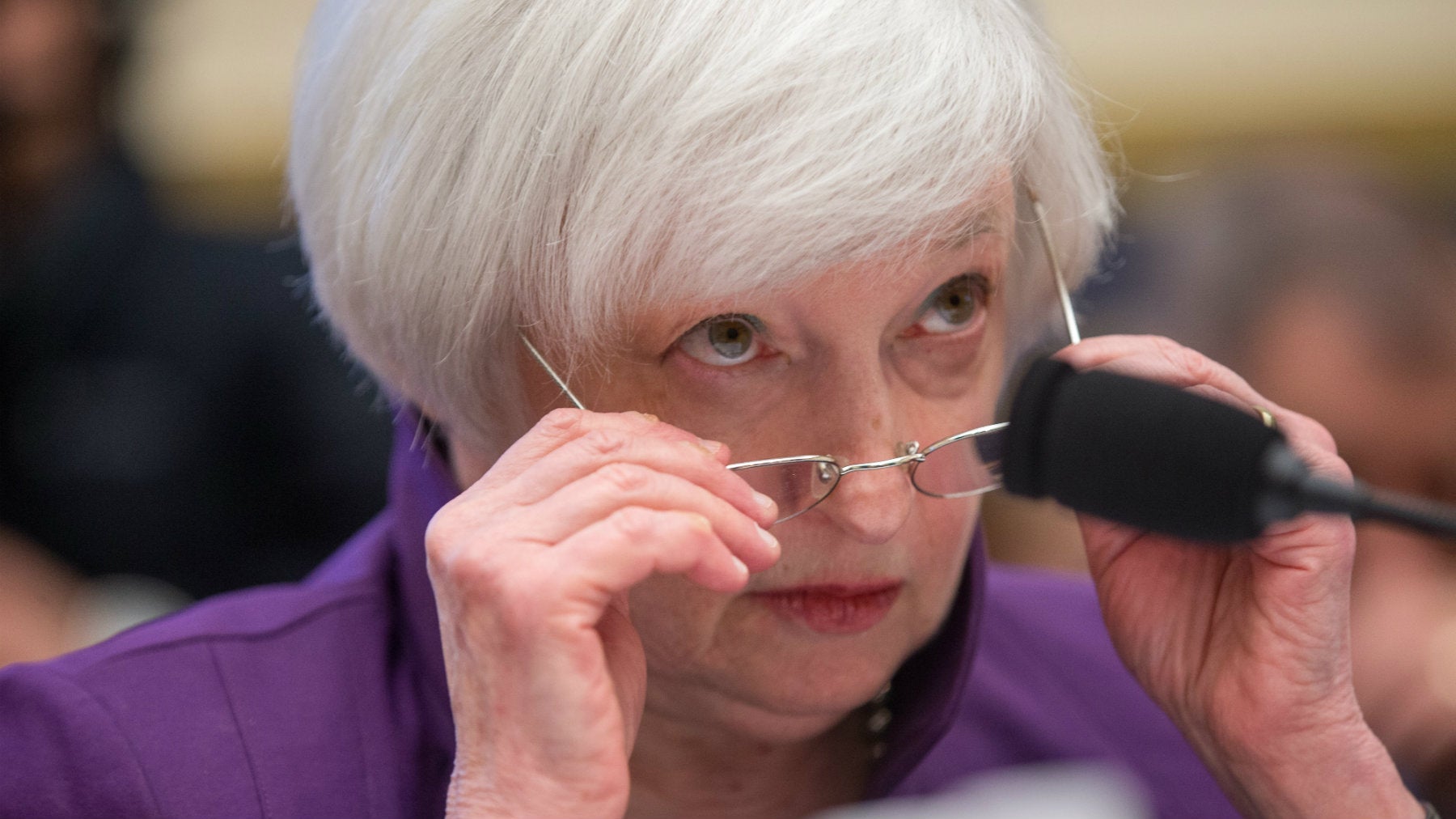The Fed is dancing around its decision on a December rate hike
Here we go again. The Federal Reserve just released the minutes from its October policy meeting.


Here we go again. The Federal Reserve just released the minutes from its October policy meeting.
That’s the last before the US central bank’s December meeting.There’s a very firm consensus (paywall) that the world’s most elusive 25 basis points are expected to finally make their appearance at that meeting, which will also feature a press conference from Fed Chair Janet Yellen.
Expectations of a rate hike were reinfoced by the release of today’s minutes, which showed the Fed’s rate-setting committee, the Federal Open Market Committee, eager to chat about the possibility that it would act at the December meeting. Here’s a smattering of some of the oft-mentioned concerns during the meeting.
December/”Next meeting” (12 mentions)
The Fed included the phrase “In determining whether it will be appropriate to raise the target range at its next meeting” in its October policy statement, which a lot of investors and Fed watchers took to mean ‘We’re going to raise rates before the end of year, trust us.’
In classic Fed fashion, that seemingly decisive statement was crafted to offer a fair amount of wiggle room for the committee. The minutes said:
Members emphasized that this change was intended to convey the sense that, while no decision had been made, it may well become appropriate to initiate the normalization process at the next meeting, provided that unanticipated shocks do not adversely affect the economic outlook and that incoming data support the expectation that labor market conditions will continue to improve and that inflation will return to the Committee’s 2 percent objective over the medium term. Members saw the updated language as leaving policy options open for the next meeting. However, a couple of members expressed concern that this wording change could be misinterpreted as signaling too strongly the expectation that the target range for the federal funds rate would be increased at the Committee’s next meeting.
Inflation (77 mentions)
Cheap oil has been weighing on inflation for more than a year, and the FOMC continues to think the decline in inflation due to low energy prices will be ”transitory.”
While inflation was anticipated to remain near its recent low level in the near term, reflecting the transitory effects of declines in energy and import prices, members continued to expect inflation to rise gradually toward 2 percent over the medium term as the labor market improved further and such transitory effects dissipated.
Housing (4 mentions)
It looks like the US economy is getting back into building houses again.
Participants generally viewed the housing sector as continuing to recover, although a couple of participants noted that the pace of recovery was slow. Contacts in a number of Districts were upbeat about the sector, citing rising home prices and a healthy pace of construction and sales.
Wages (4 mentions)
Despite robust job growth and declining unemployment, wage growth has proved surprisingly stubborn.
The incoming information on wages and labor compensation, including recent data on average hourly earnings of employees, suggested that the pace of wage gains remained subdued. A number of participants cited staff analysis indicating that the modest pace of labor compensation growth in recent years may have reflected slower trend productivity growth that offset the upward pressure on wages from the narrowing of labor market slack. However, other participants noted that the continued subdued trend in wages was evidence of an absence of upward pressure on inflation from the current level of resource utilization. A number of participants reported that some of their business contacts were experiencing increasing challenges in hiring, resulting in upward pressure on wages in various occupations and in some geographic areas.
China (1 mention)
Worries over global market meltdown have melted away.
Continued concerns about the outlook for global economic growth weighed on commodity and foreign equity prices early in the intermeeting period. These declines subsequently were reversed, and foreign equity price indexes ended the period higher, pushed up by expectations of additional monetary policy accommodation in major foreign economies and some favorable economic indicators in China.
Lacker (3 mentions)
Jeff Lacker, president of the Richmond Fed, is fed up. September’s lone policy dissenter at the October meeting is itching to raise rates and is tired of all the debate getting in the way.
Mr. Lacker dissented because he continued to believe that maintaining exceptionally low real interest rates was not appropriate for an economy with persistently strong consumption growth and tightening labor markets. Data received since the September FOMC meeting suggested that the global economic and financial developments of late summer had little effect on the medium-term outlook for U.S. growth and inflation. He remained reasonably confident that inflation would return to the Federal Reserve’s 2 percent goal once temporary disinflationary impulses had passed.